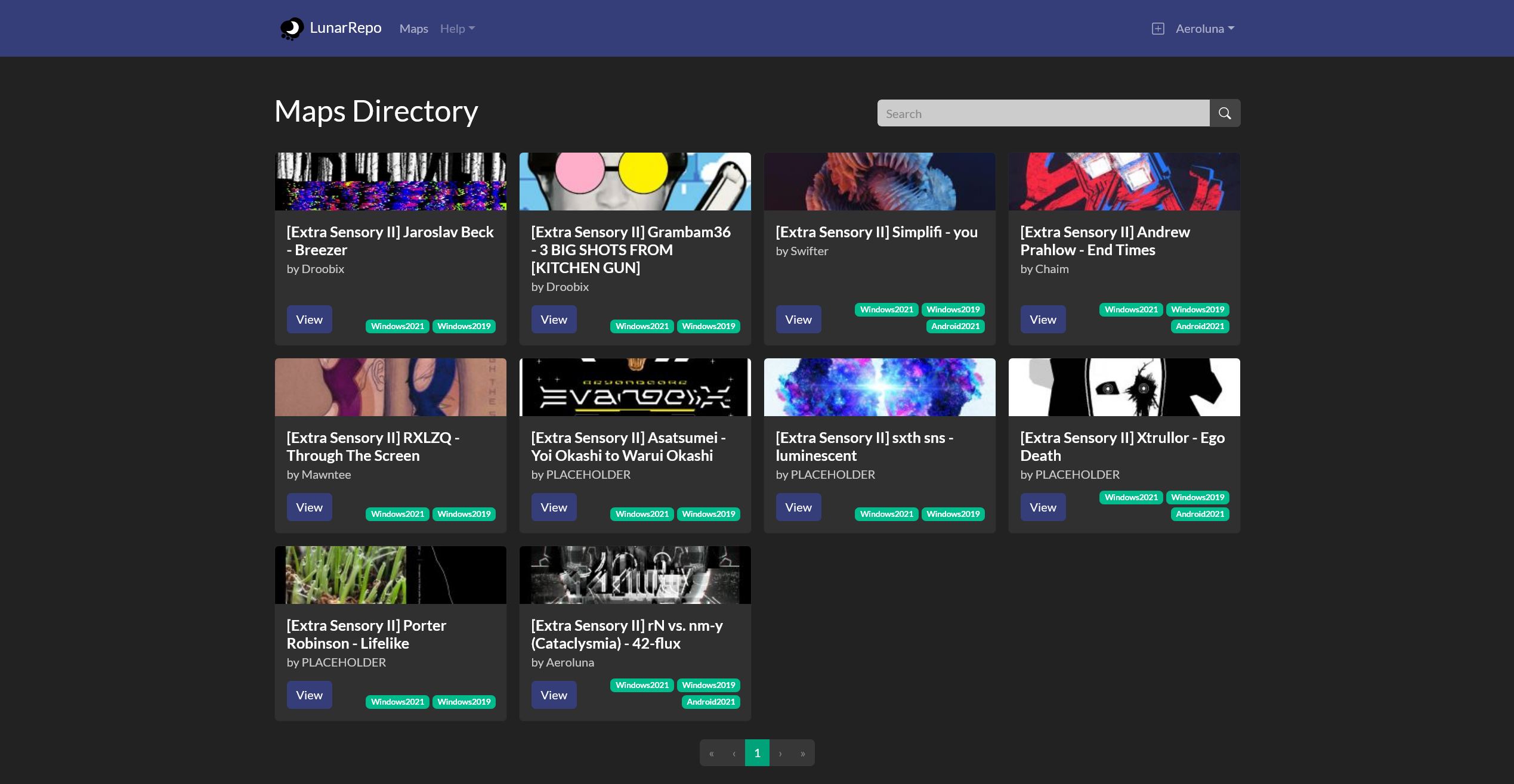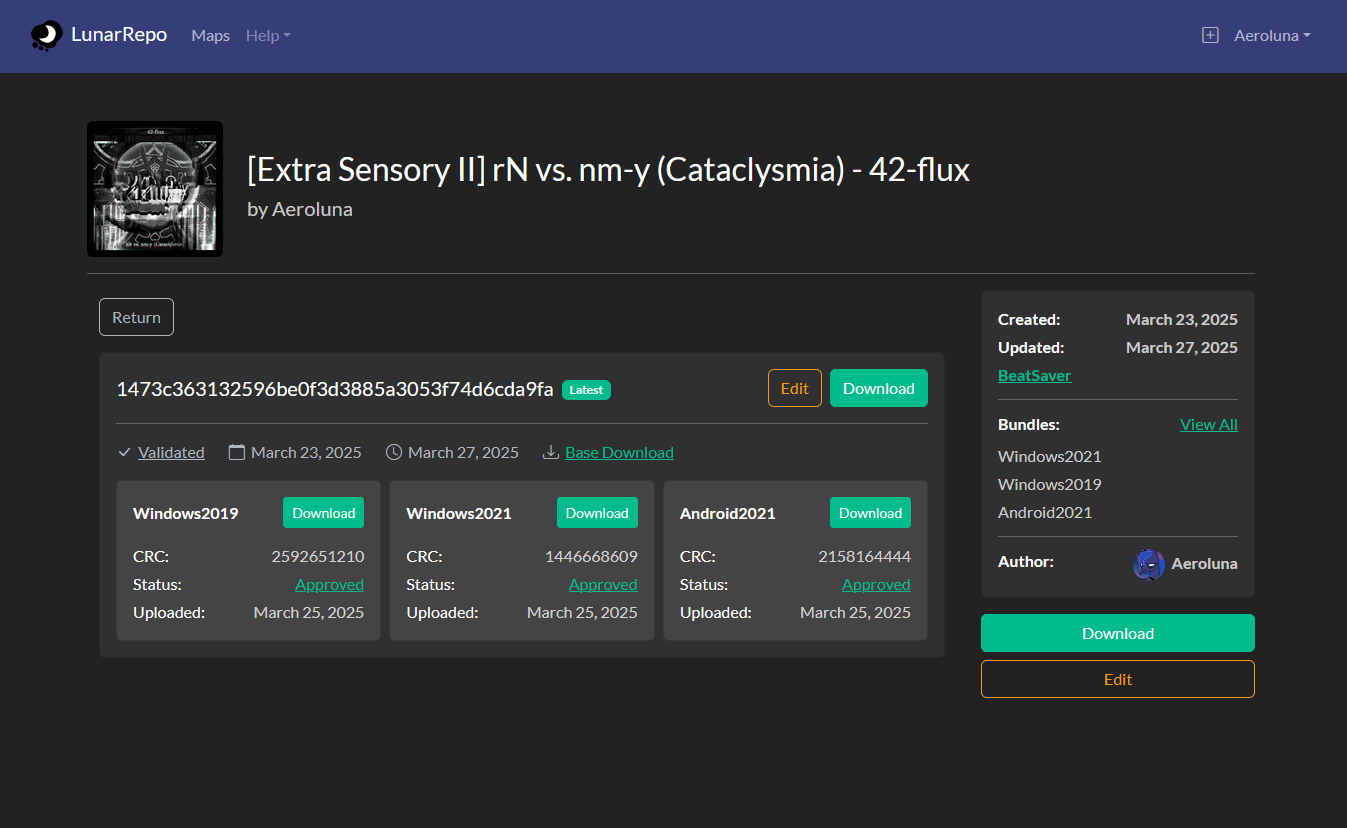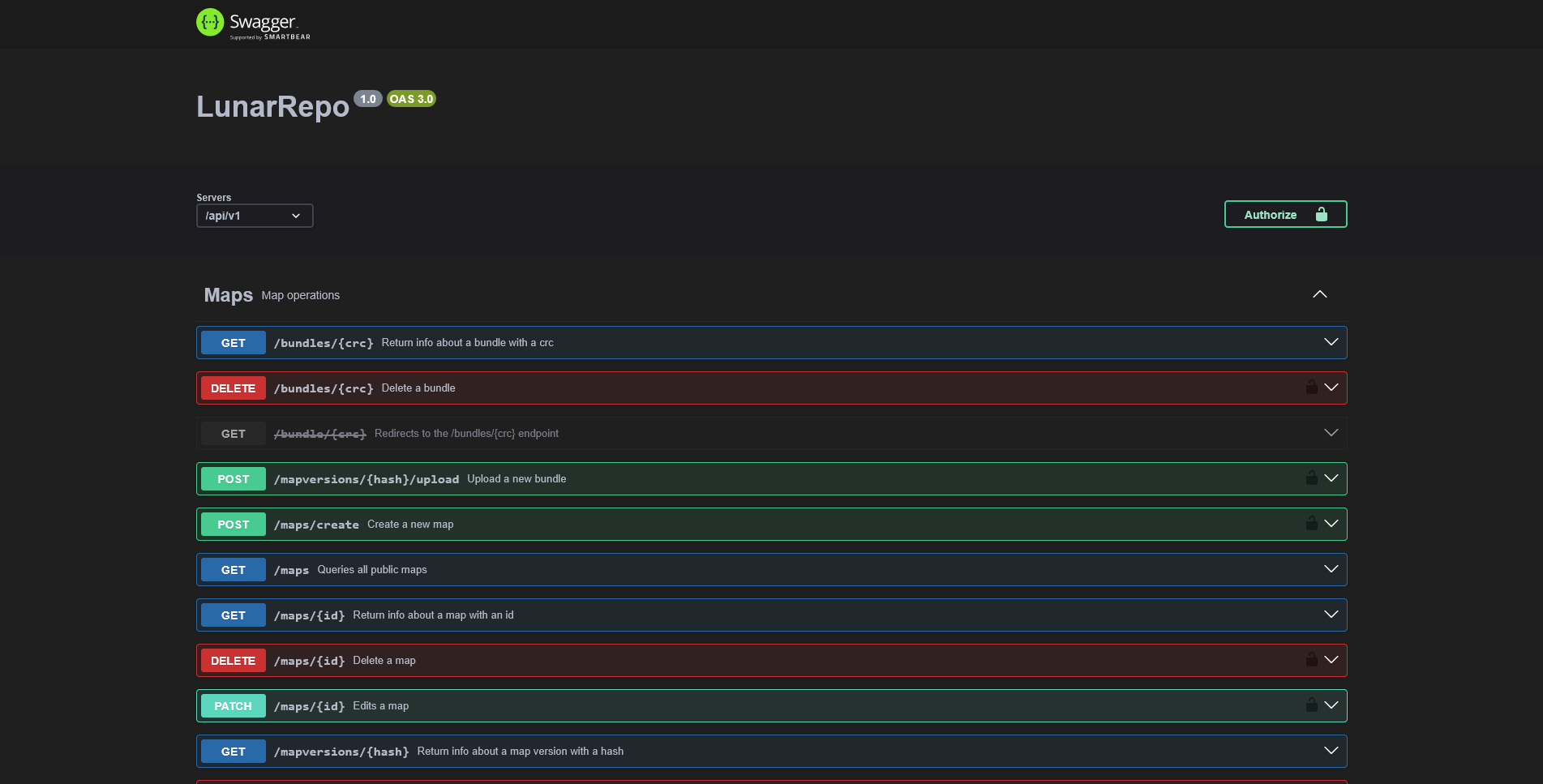A major challenge during the development of Vivify was figuring out how to deliver custom assets to players. While custom maps are typically hosted on BeatSaver, the platform doesn't allow external asset files to be packaged directly with the map. To address this, we decided to host the map files on BeatSaver and serve the asset bundles from a separate platform.
To support this, I created LunarRepo, a repository for asset bundles that allows users to link their BeatSaver maps and upload corresponding asset files. Once uploaded, maps and their bundles become searchable on the site and are downloadable via the API.
LunarRepo

